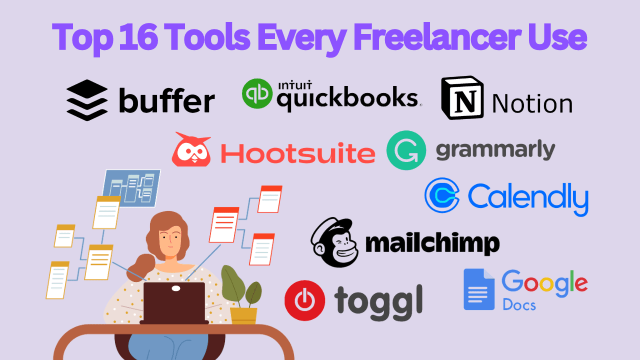Currently Empty: $0.00
Turning a side hustle freelancing gig into a full-time freelance career

How to turn a side hustle freelancing gig into a full-time freelance career?
Turning a side hustle freelancing gig into a full-time freelance career is an exciting yet challenging endeavor that requires careful planning, dedication, and strategic steps. Making this transition successfully involves assessing your current situation, planning your finances, expanding your skillset, building a strong portfolio, networking, setting clear goals, effective marketing, diversifying income streams, managing time wisely, providing excellent customer service, and continuously learning and adapting. Let’s delve deeper into each of these components to provide a comprehensive guide on how to make the transition successfully:
1. Assess Your Current Situation:
Evaluate your side hustle’s performance thoroughly. Look at factors such as your income, client base, workload, and potential for growth. Determine if your side hustle has the potential to sustain you financially as a full-time freelance career. Assess the demand for your services, your ability to attract and retain clients, and any limitations or challenges you may face in scaling your business.
2. Financial Planning:
Calculate your monthly expenses and ensure you have enough savings to cover your living expenses for at least a few months. Freelancing often comes with fluctuating income, so having a financial cushion is crucial. Create a budget that accounts for both your personal and business expenses, including taxes, insurance, and retirement savings. Consider setting aside emergency funds to cover unexpected expenses or income disruptions.
3. Expand Your Skillset:
Identify your strengths and weaknesses as a freelancer. Invest in improving your skills through courses, workshops, or self-study. Expanding your skillset not only enhances your capabilities but also increases your competitiveness in the marketplace. Stay updated on industry trends, emerging technologies, and best practices relevant to your freelancing niche.
4. Build a Strong Portfolio:
Showcase your best work in a professional portfolio that highlights your expertise, creativity, and versatility. Include a diverse range of projects that demonstrate your skills and capabilities to potential clients. Tailor your portfolio to showcase your niche expertise and address the specific needs and preferences of your target audience. Regularly update your portfolio with new projects and achievements to keep it fresh and relevant.
5. Network and Build Relationships:
Networking is essential for freelancers to expand their professional connections, gain referrals, and discover new opportunities. Attend industry events, conferences, and meetups to connect with fellow freelancers, potential clients, and industry professionals. Join online communities, forums, and social media groups where you can engage with like-minded individuals and share insights and experiences. Build genuine relationships based on trust, reciprocity, and mutual support.
6. Set Clear Goals:
Define your long-term career goals and create a roadmap to achieve them. Break down your goals into smaller, actionable steps and set deadlines to keep yourself accountable. Regularly review and adjust your goals based on your progress, changing market conditions, and evolving priorities. Stay focused on your objectives and remain flexible in adapting your strategies as needed to stay on course.
7. Market Yourself Effectively:
Develop a strong personal brand that reflects your unique identity, values, and expertise as a freelancer. Create a professional website that showcases your services, portfolio, testimonials, and contact information. Utilize social media platforms such as LinkedIn, Twitter, and Instagram to share valuable content, engage with your audience, and promote your services. Invest in digital marketing strategies such as search engine optimization (SEO), content marketing, and email marketing to reach and attract potential clients.
8. Diversify Your Income Streams:
Relying solely on one type of freelance work can be risky, especially during economic downturns or changes in client demand. Consider offering additional services within your freelancing niche or branching out into related fields to diversify your income streams. Explore opportunities for passive income, such as selling digital products, affiliate marketing, or teaching online courses. Diversifying your income can provide stability and resilience during lean periods and expand your earning potential over time.
9. Manage Your Time Wisely:
As a full-time freelancer, effective time management is essential for maximizing productivity, meeting deadlines, and maintaining work-life balance. Set aside dedicated work hours each day and establish routines that help you stay focused and organized. Prioritize tasks based on their importance and urgency, and use tools such as calendars, to-do lists, and time-tracking apps to manage your workload efficiently. Take regular breaks to rest and recharge, and avoid overcommitting yourself to avoid burnout.
10. Provide Excellent Customer Service:
Building a reputation for reliability, professionalism, and excellent customer service is crucial for attracting and retaining clients in the competitive freelancing market. Communicate clearly with clients, set realistic expectations, and deliver high-quality work that exceeds their expectations whenever possible. Be responsive to client inquiries and feedback, and proactively address any issues or concerns that may arise during the project lifecycle. Building strong relationships with clients based on trust, transparency, and mutual respect can lead to repeat business, referrals, and positive testimonials.
11. Continuously Learn and Adapt:
The freelance landscape is constantly evolving, with new technologies, trends, and market dynamics shaping the industry. Stay updated on industry developments, emerging trends, and best practices relevant to your freelancing niche. Invest in continuous learning and professional development to expand your skills, knowledge, and expertise. Be adaptable and open to change, and embrace opportunities to innovate, experiment, and evolve in response to changing market conditions and client needs.
Conclusion
Transitioning from a side hustle freelancing gig to a full-time freelance career requires careful planning, dedication, and strategic execution. By assessing your current situation, planning your finances, expanding your skillset, building a strong portfolio, networking, setting clear goals, effective marketing, diversifying income streams, managing time wisely, providing excellent customer service, and continuously learning and adapting, you can successfully make the leap into full-time freelancing.
It’s important to recognize that the journey to full-time freelancing may come with challenges and uncertainties. However, by following the outlined guide and remaining committed to your goals, you can navigate these challenges with confidence and resilience.
Remember to stay flexible and adaptable, continuously evaluate and adjust your strategies, and seek support from your network and mentors along the way. With perseverance, determination, and a proactive approach, you can turn your side hustle freelancing gig into a thriving and fulfilling full-time freelance career.
Ultimately, success as a full-time freelancer is not just about financial gain but also about personal fulfillment, professional growth, and the freedom to pursue your passions on your own terms. Embrace the opportunities that freelancing offers, and embark on this exciting journey with enthusiasm and determination. Your freelance career awaits, ready for you to make it a reality.







